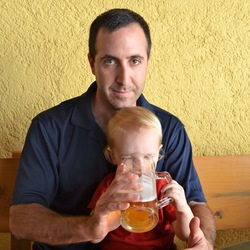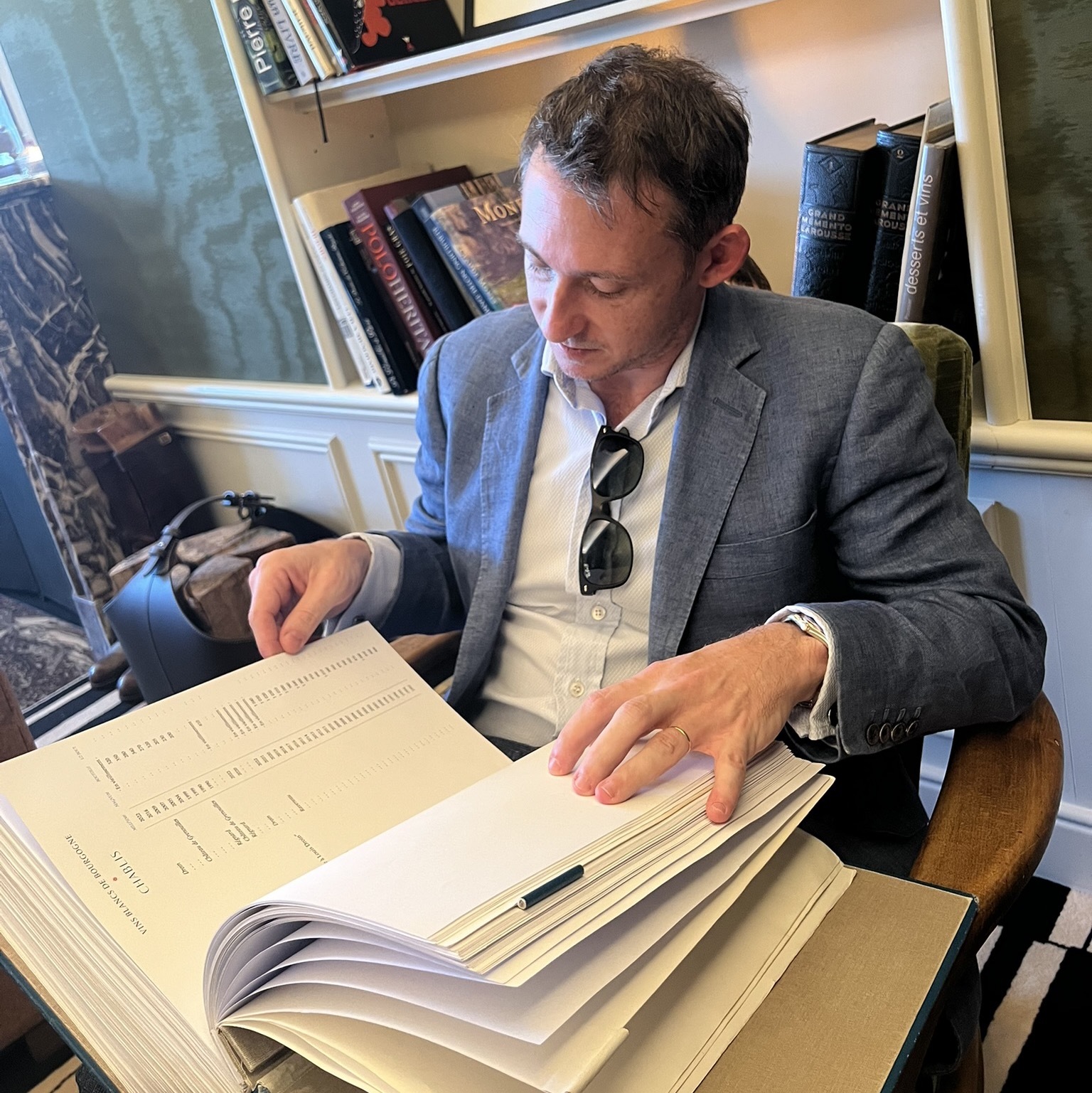Symmetry
Tenuta l'Impostino
Ciarlone Montecucco Rosso Syrah Blend 2016
Nifty little wine, Sangiovese dominated in the blend - tasted like a really nice Rosso di Montalcino. Effortless & elegant, beautiful balance of flavors w/dusty cherries & sweet soil, worn leather, tomato leaves, peppery… tannins & acidity in perfect symmetry. — 3 years ago
Château Latour
Premier Grand Cru Classé Pauillac Red Bordeaux Blend 1982
The 1982 Latour is the most consistent of the First Growths in this auspicious vintage. Tasted from both bottle and magnum in the UK in recent months, this note comes from an ex-château magnum tasted at a private dinner in Bordeaux. It exudes class and majesty on the nose with its copious but brilliantly focused black fruit laced with cedar and graphite. To use a phrase I have written before, it is blue-blooded...regal. That comes through on a palate that has a haunting symmetry and a killer finish that is brilliantly defined and audaciously long, graphite lingering on the aftertaste. Quite simply, claret does not come better than this. Tasted at a private dinner in Bordeaux. (Neal Martin, Vinous, September 2022)
— 3 years ago
Penfolds
Bin 28 Kalimna South Australia Shiraz 2015
Deep red color. Aromas of violets, crushed stone, toasted eucalyptus and red berries. Dark cherry fruit on the pallet with hints of earth, coffee, grilled herbs and spices. Touch of toasted almond and firm tannins on the finish. Fresh and lively. Well balanced with nice symmetry. Though rich and full bodied, there is also an elegance to this wine. — 4 years ago
Château Léoville-Las Cases
Grand Vin de Leoville du Marquis de las Cases Saint-Julien Red Bordeaux Blend 2000
Quite deep ruby garnet core and medium ruby garnet rim. This is showing more development, with cedar , cigar box , cassis and blackberry richness , aromatic and enticing from the very beginning . On the palate with is well balanced with a good mineral backbone , grafite and blackcurrant hints , really good symmetry and balanced , refreshing acidity , polished fine tannin . Long finish . Showing well now , in a really good spot where this has development on the nose but no lack of fruit of backbone on the palate . Will certainly continue at this level for another 10- 15 years . — a year ago
Poggio Antico
Brunello di Montalcino Sangiovese 2012
Tonight, we’re sipping a delicious Poggio Antico Brunello di Montalcino DOCG (2012).
The vineyards of Poggio Antico are situated on some of Montalcino’s highest hills (>1,500 ft elevation), overlooking the beautiful, sun-soaked landscape of Tuscany.
In a warm climate, high altitude sites like this benefit from a comparatively lower air temperature, greater diurnal range (warm days, cool nights), and enhanced solar intensity, particularly when vines are planted on hillsides, angled towards the sun.
These conditions (among others) are important for quality winemaking, for example, the intense sunshine promotes grape ripening (sugar accumulation; development of flavors, tannins, color), while the cooling influences help retain acidity and more delicate aromas in the grapes; they also enable a longer ripening period overall, setting the stage for a well-balanced, concentrated wine.
It was interesting to learn that Poggio Antico vinifies and matures its Sangiovese according to detailed soil units, leveraging what it calls a “geological symphony,” as a significant part of the terroir expression. It later blends (or “harmonizes”) these units with the aim of creating balance and complexity.
As a Brunello di Montalcino DOCG, this wine must be 100% Sangiovese and could not be released from Poggio for at least 5 years from the harvest, during which time it aged for at least 2 years in oak. Poggio exceeded these legal minimums by aging this wine for 4 years, including 3 years in traditional Slavonian oak barrels and one year in bottle.
We paired this wine with a homemade Bolognese. The spices of the sauce lent symmetry to the spice (nutmeg, clove) notes in the wine, which didn’t compete, but, rather, complemented each other. Also, the fat in the ground sirloin (along with the salty parmesan and decade+ of maturing) helped smooth the high tannins of the Sangiovese, enhancing our palates’ experience of other delicious dimensions.
It was molto bene! Cheers! — 2 years ago




Domaine Robert Groffier
Bonnes Mares Grand Cru Pinot Noir 2020
The 2020 Bonnes-Mares Grand Cru has a fragrant, perfumed and classier bouquet than Hudelot-Baillet's Bonnes-Mares: well-defined with clever use of stems. Wonderful delineation. The palate is medium-bodied with fine-boned tannins. Lovely symmetry and poise build towards a linear yet intense finish. It will require 4-5 years to subsume the oak, but there is great potential, and it has a sense of statesmanlike class. Tasted blind at the Burgfest tasting. (Neal Martin, Vinous, October 2024)
— a year ago
Domaine Labet
Lias Les Juvénilles Jura Chardonnay 2020
Tonight we opened the 2020 Domaine Labet Lias Les Juvéniles made with Chardonnay grown on blue clay and limestone soils (known as ‘Lias’), hailing from 30-60 year old vines in the lieux-dits of La Pellerine, Le Crêt, Arteau. 🌱
It underwent fermentation with wild yeast followed by 17 months aging on the lees in 228L oak barrels.
The color is a luminescent golden hue. After giving it a swirl, the aromas and flavors are singing!
It offers notes of flint, toast, fresh quince, honeydew, starfruit, yellow apple skin, juicy white peach, lemon peel, white blossom, chamomile, cream, sage, and hazelnut.
On the palate this wine is dry with structural symmetry and textural richness. It is mouth-coating with a long-elegant finish.
— a year ago

Château Léoville Poyferré
Saint Julien Red Bordeaux Blend 2018
The 2018 Léoville-Poyferré performs similarly to the bottle tasted a few weeks earlier in the UK for my in-bottle round-up, although here I sense more opulence on the nose, perhaps more florality. The palate is medium-bodied with succulent ripe tannins, broad and sensual, plummy with that beguiling symmetry on the finish. It needs several years in bottle but it will be well worth the wait. Tasted at the Léoville-Poyferré vertical at the château with Sara Lecompte Cuvelier. (Neal Martin, Vinous, September 2022)
— 3 years ago
Rodney Strong
Symmetry Meritage Alexander Valley Cabernet Sauvignon Merlot 2015
Blend of 73% Cabernet Sauvignon with 10% Merlot, 8% Petit Verdot, 7% Cabernet Franc and 2% Malbec, originally founded by Rod Strong in 1959. A blend of 75% Cabernet Sauvignon, 13% Merlot, 5% Cabernet Franc, 5% Malbec and 2% Petit Verdot. Deep Ruby red with aromas of dark fruit, floral and herbs. On the palate flavors of blackberry, cherry and sweet currants with cacao and espresso notes. Full-body, well balanced with fine tannins on a long finish. Very Nice! — 3 years ago






Scott@Mister A’s-San Diego
2018 vintage. Last tasted 04.08.23 (9.5), 12.01.22 from a 375ml (9.5) and upon release 06.07.21 (9.5). Decanted and tasted after 45 minutes. Mysterious, dark-fruited and dusty nose. Medium body with excellent darkness of night color. Previous baby-fat overtures approximately 90% gonzo. Slimming down and getting more toned. In a state of transition with undeniable tension that can easily be misconstrued as underperforming. Last wine I tasted that was under this sort of metamorphosis at this level was the 1996 Pichon-Lalande about 1.5 years ago. Such a privilege to experience world-class wines in such a vulnerable moment. Everything is laid out bare/naked before you and you can see where the wine is headed and whether it will be following a trajectory that agrees with you. Definitely unusual to find this occurring in a wine this youthful but the 21st Century is smashing the old 20th Century clay tablets and digitizing. For most wine enthusiasts sampling this wine now, expecting some disappointment in the scoring. For myself, this is currently in the perfect symmetry of past, present and future. Will it show critically better in the future according to the accepted trials, palates, judges and juries? Probably. Will they experience the potential, doubts, insecurities and questions? Doubtful. This kid stays in this exact picture for another 2-4 years imho before striking another pose and I would love to taste this again during that time frame. An above and beyond thank you to FLB (Friday Lunch Bunch) regular Todd. 08.15.25. — 4 months ago